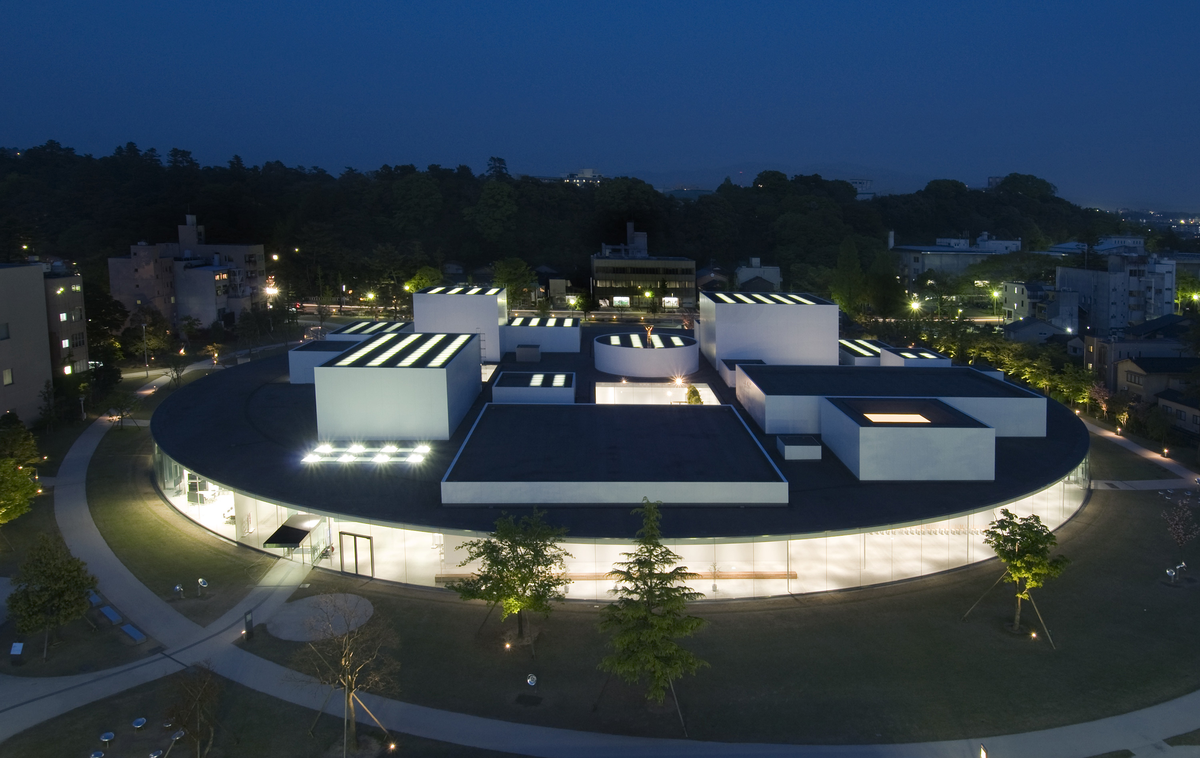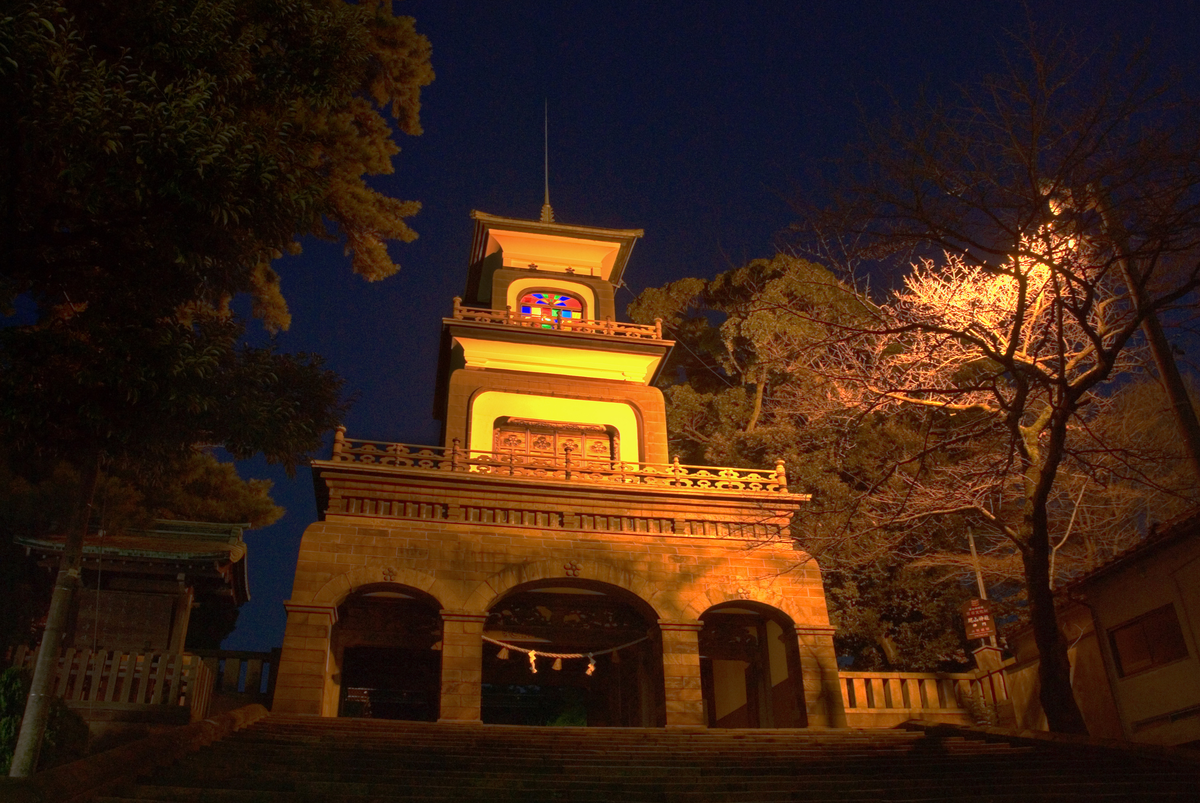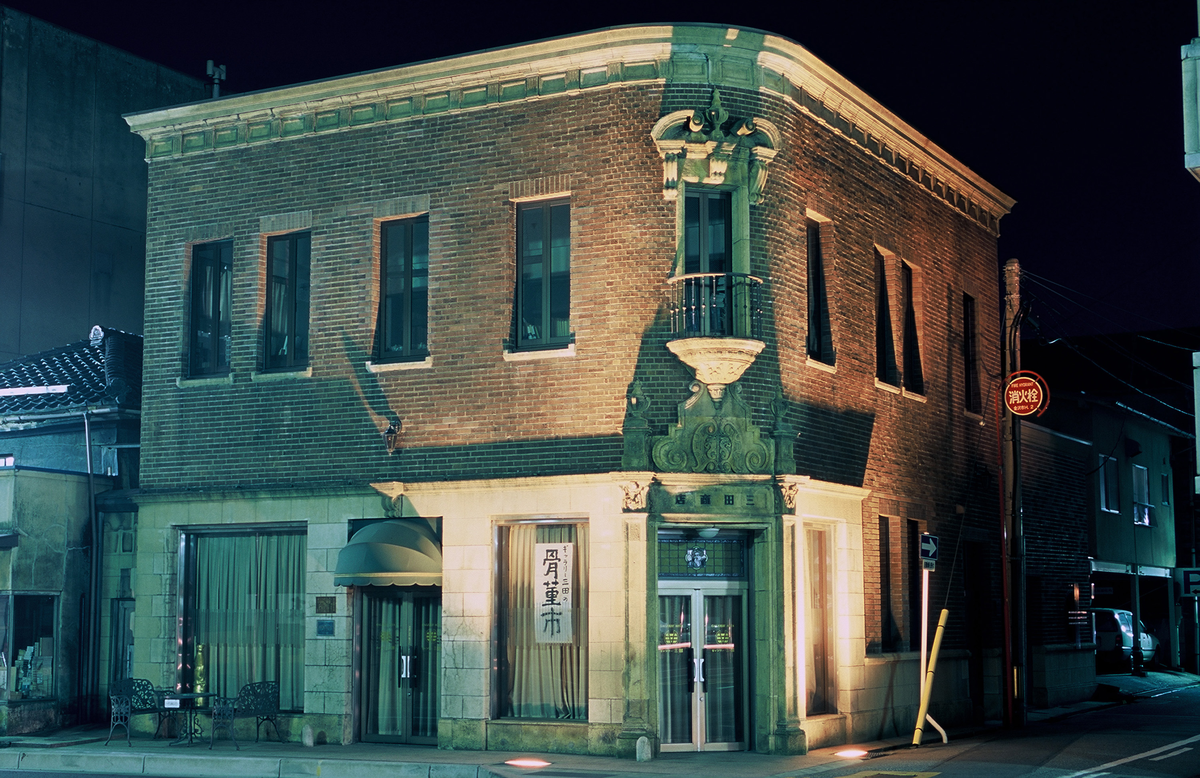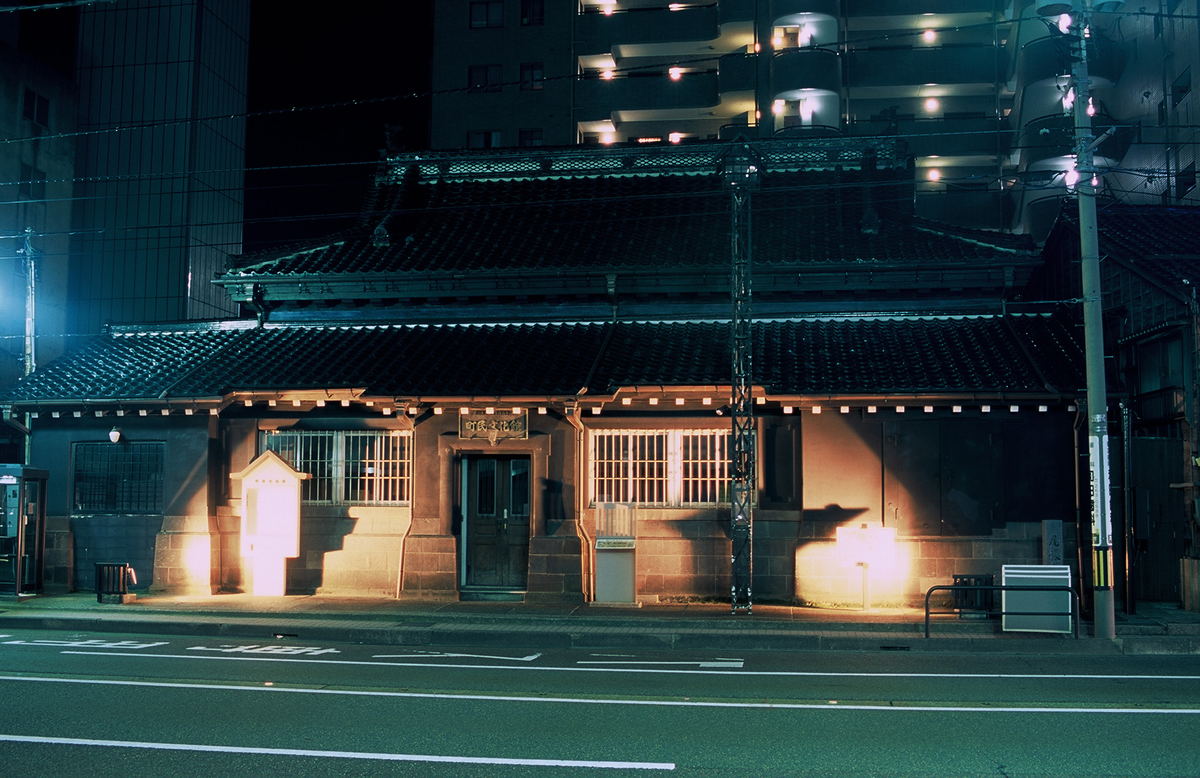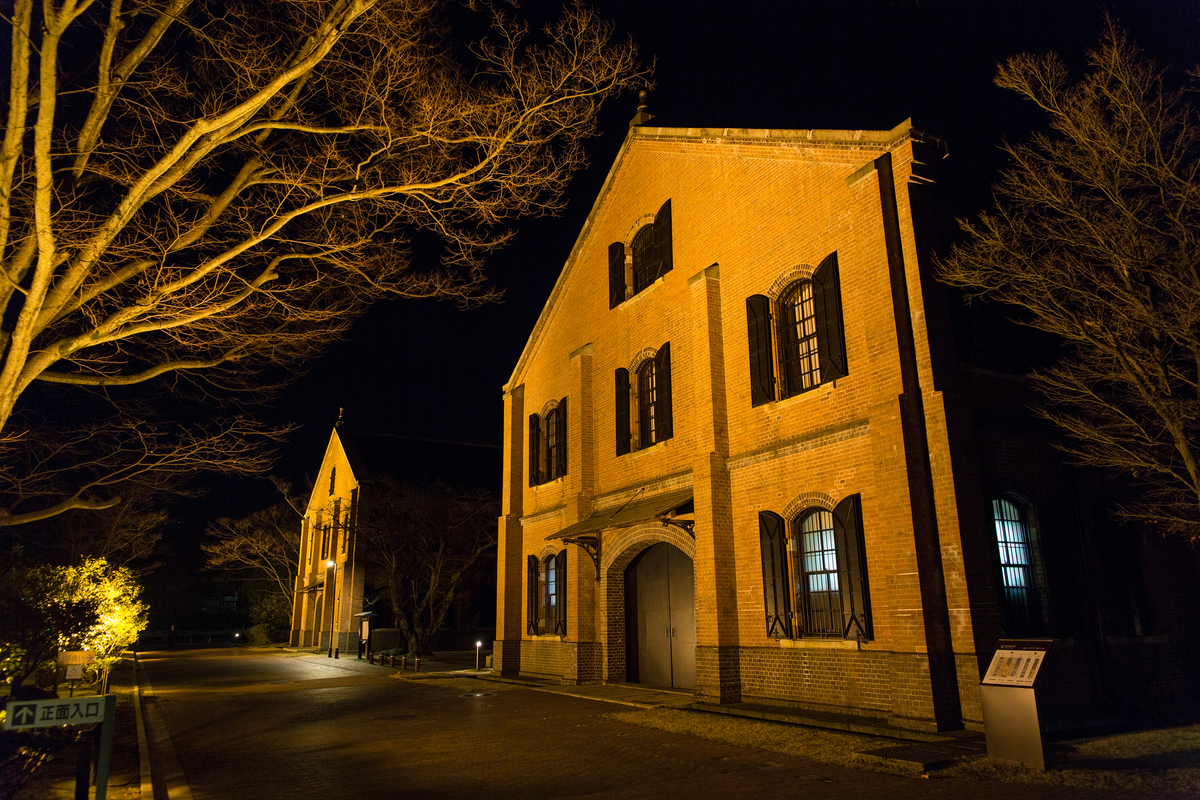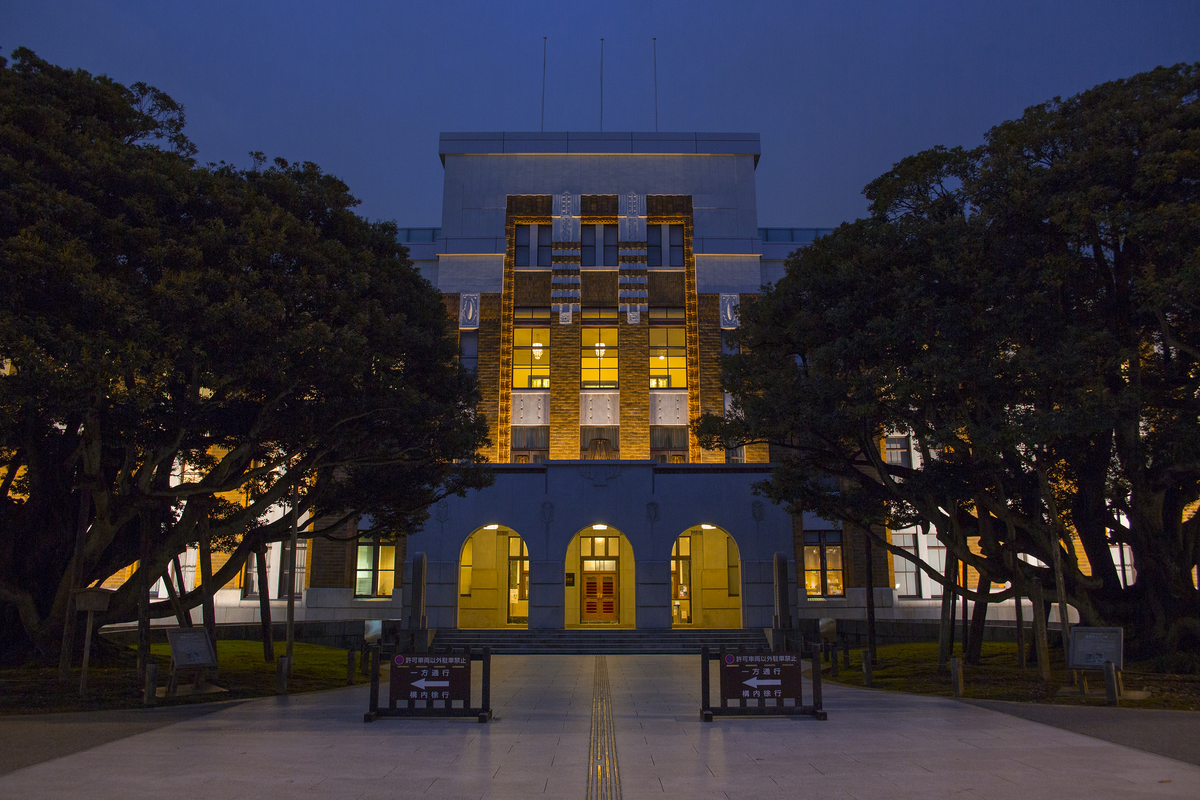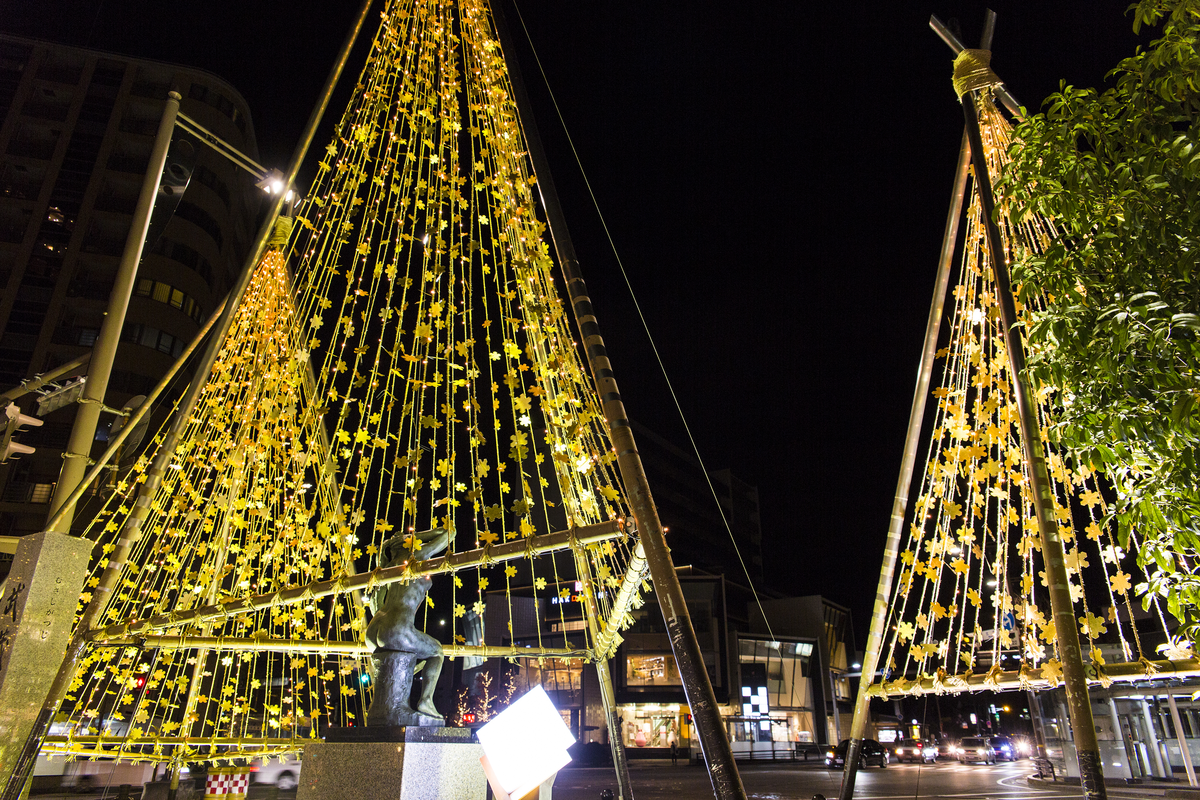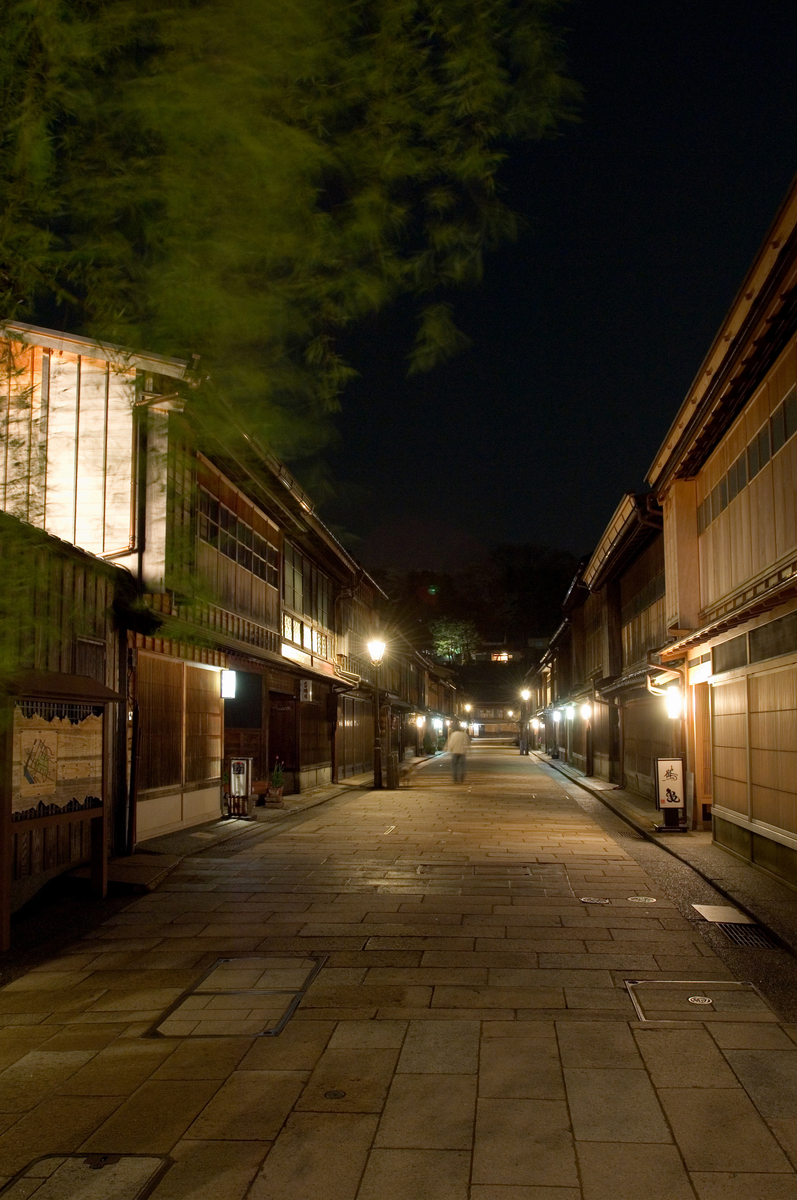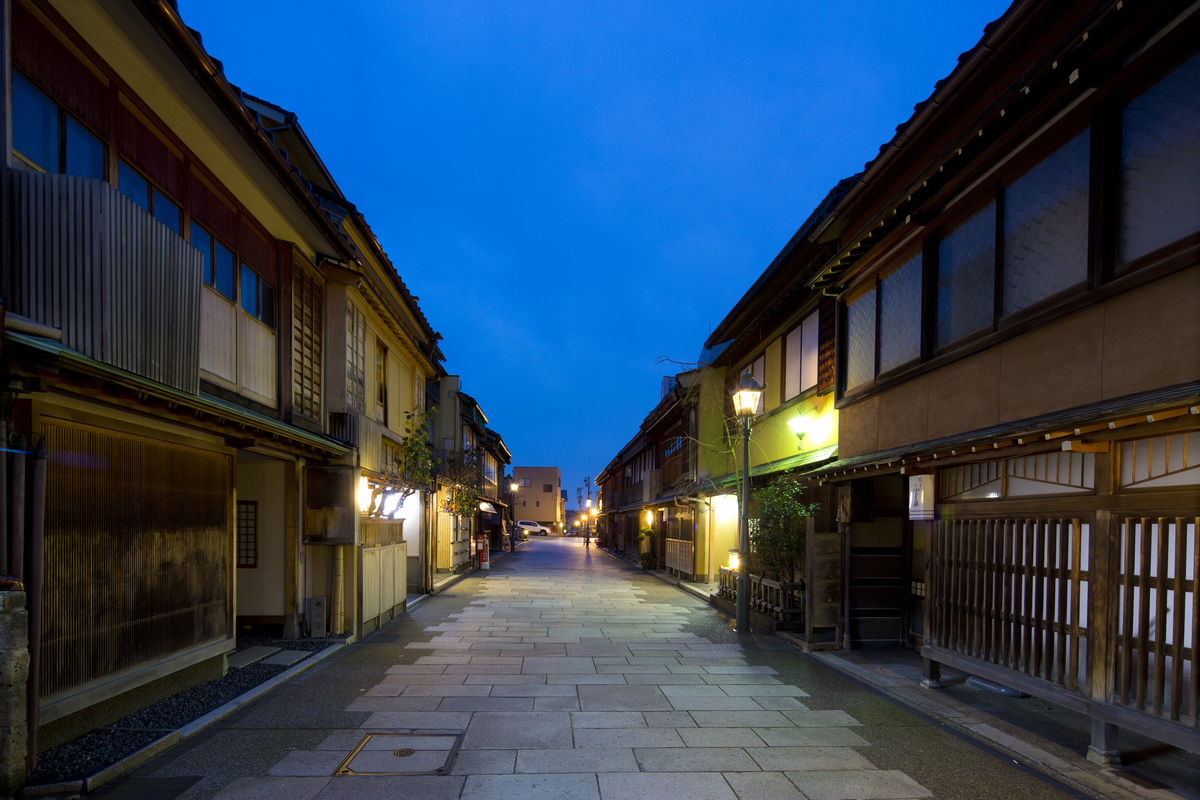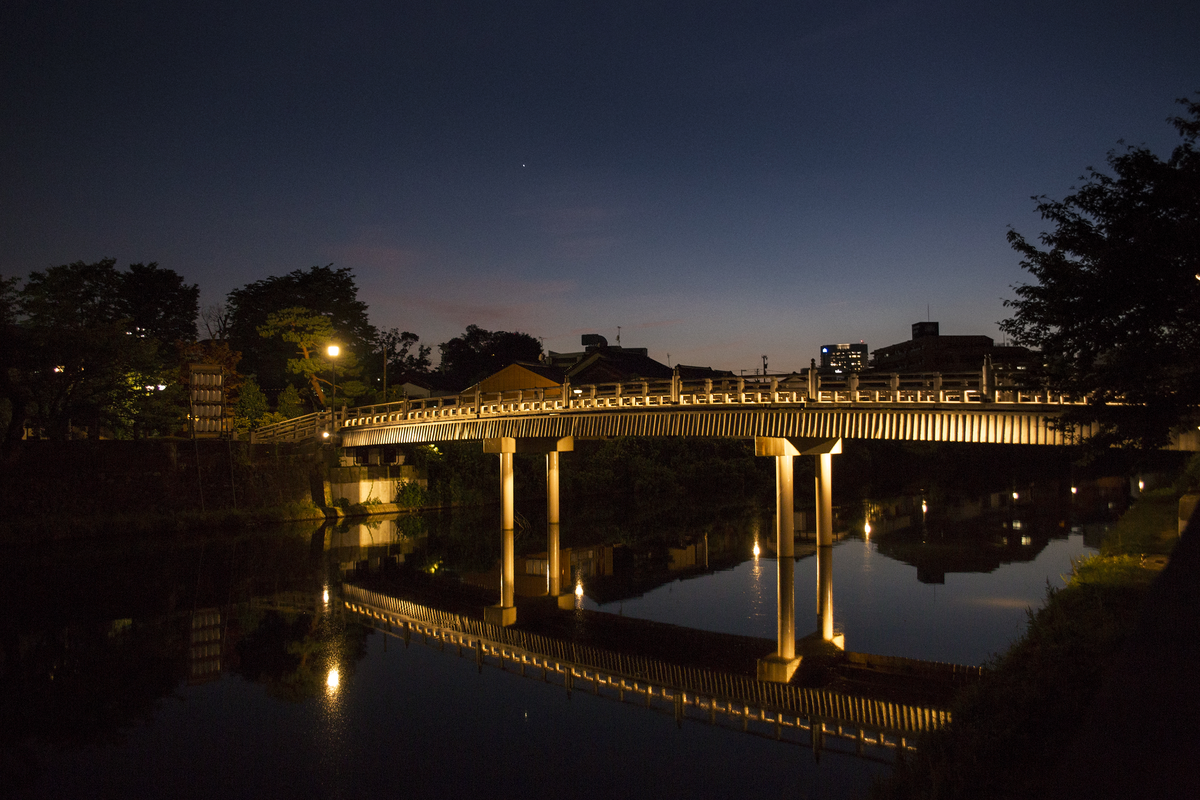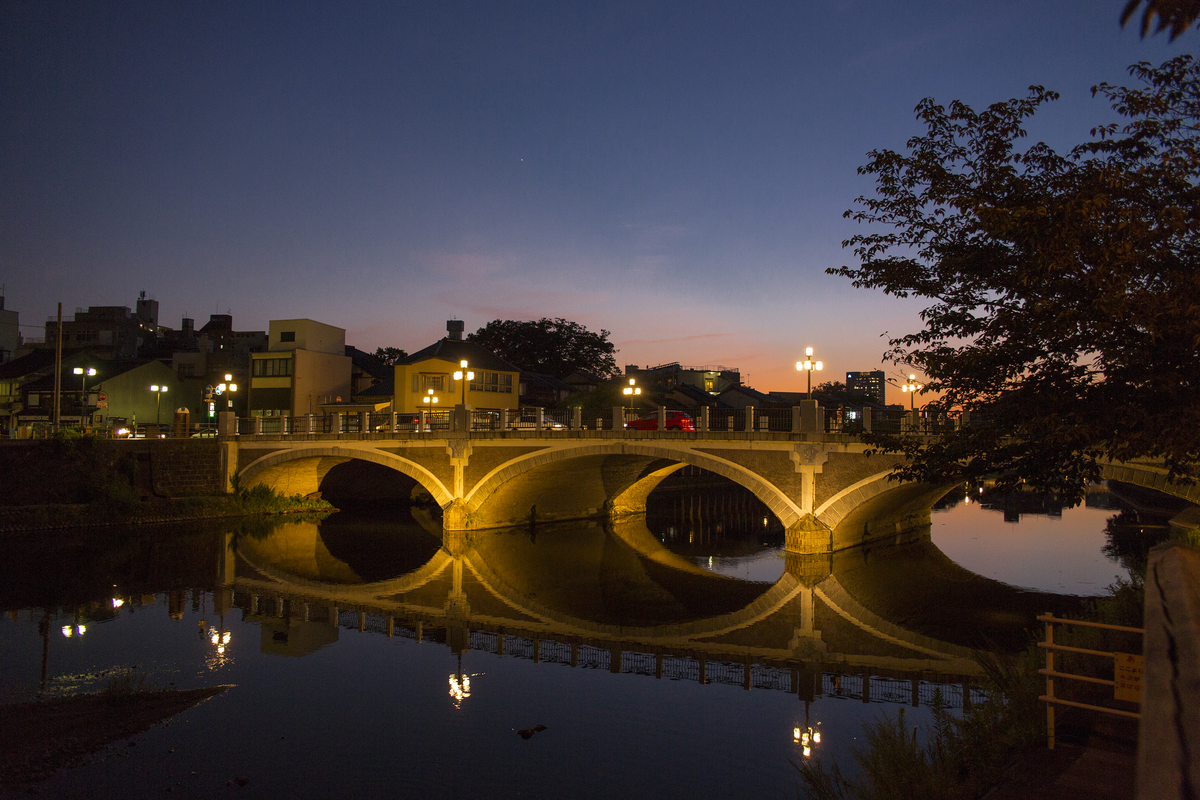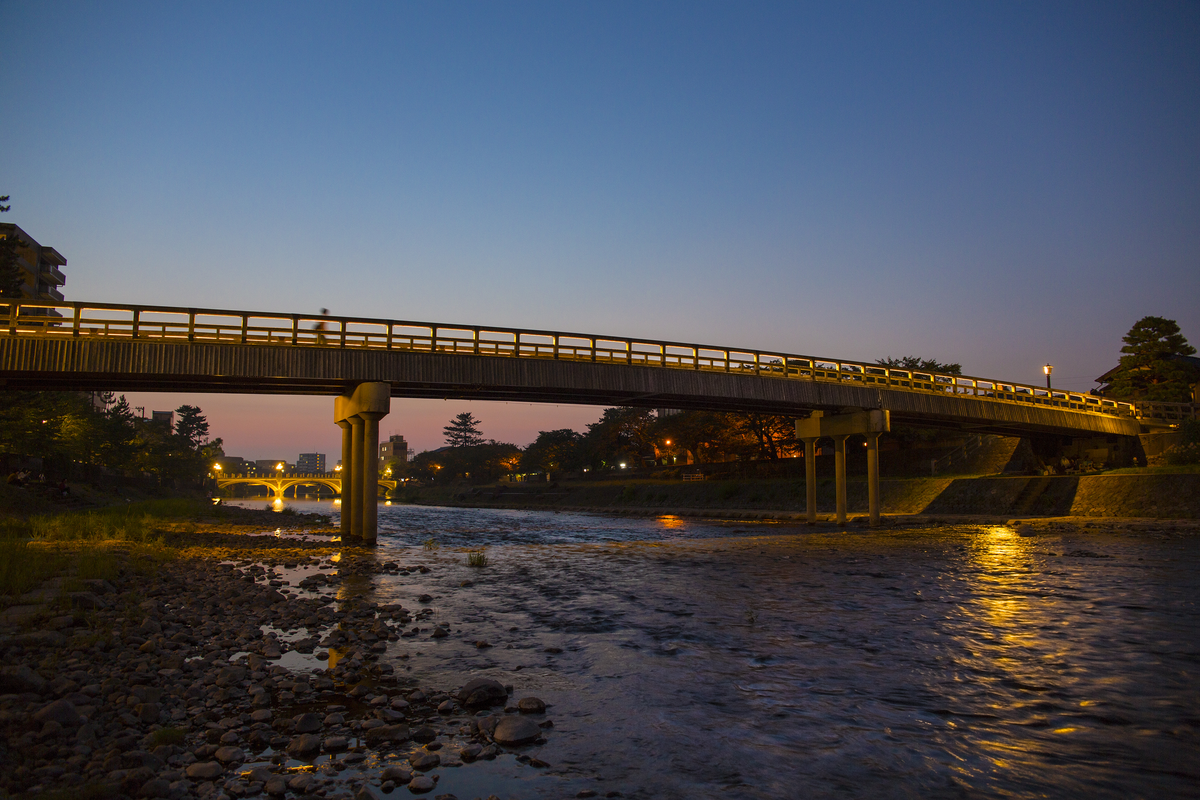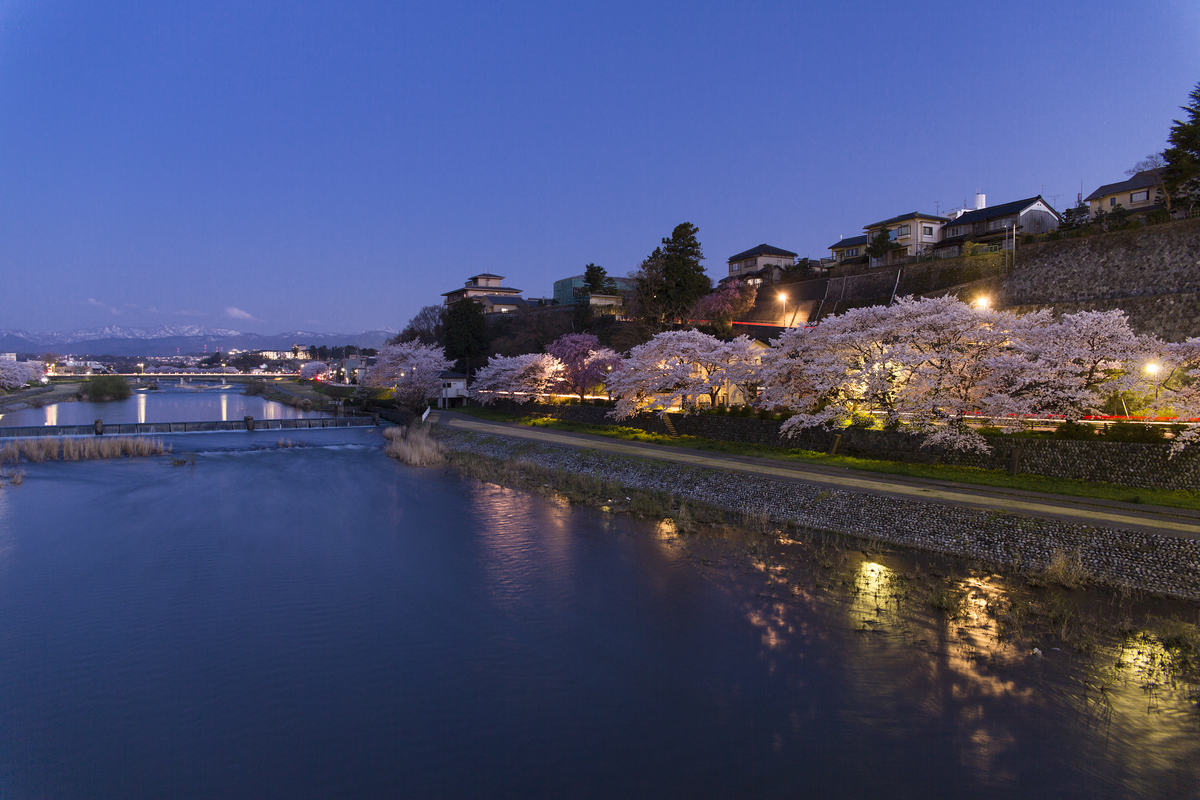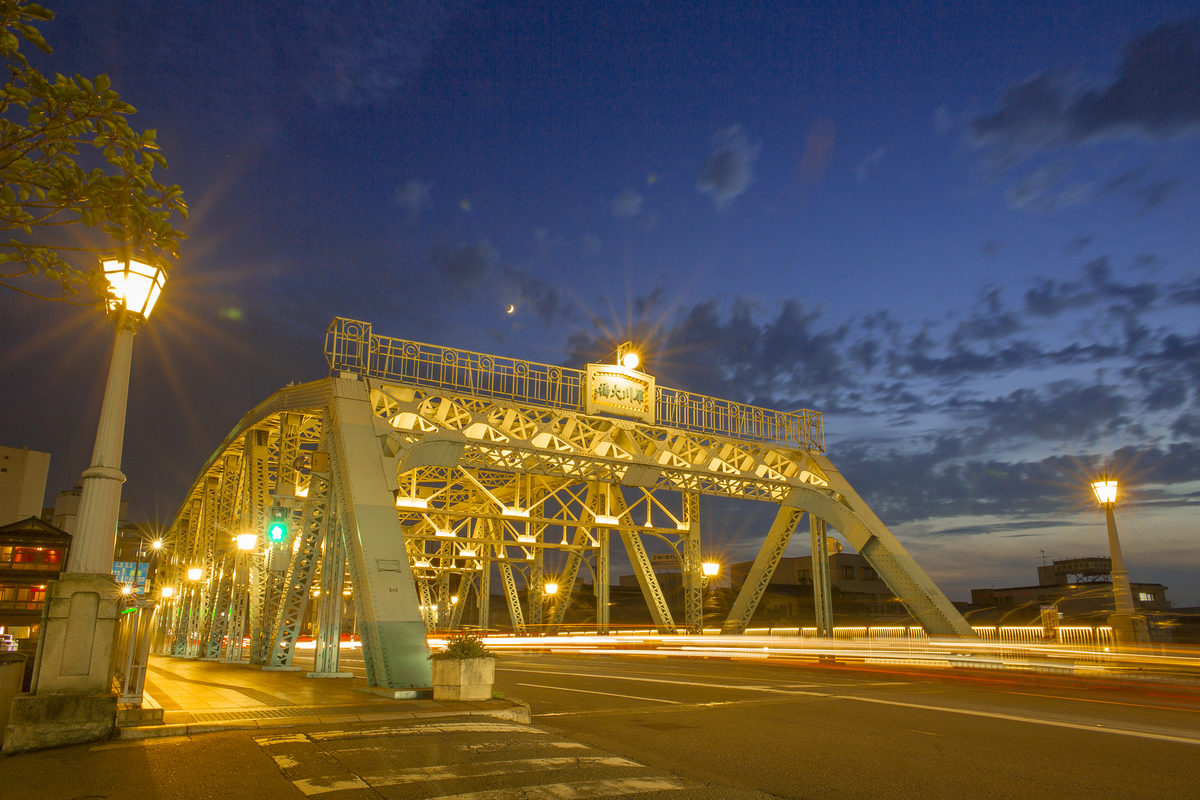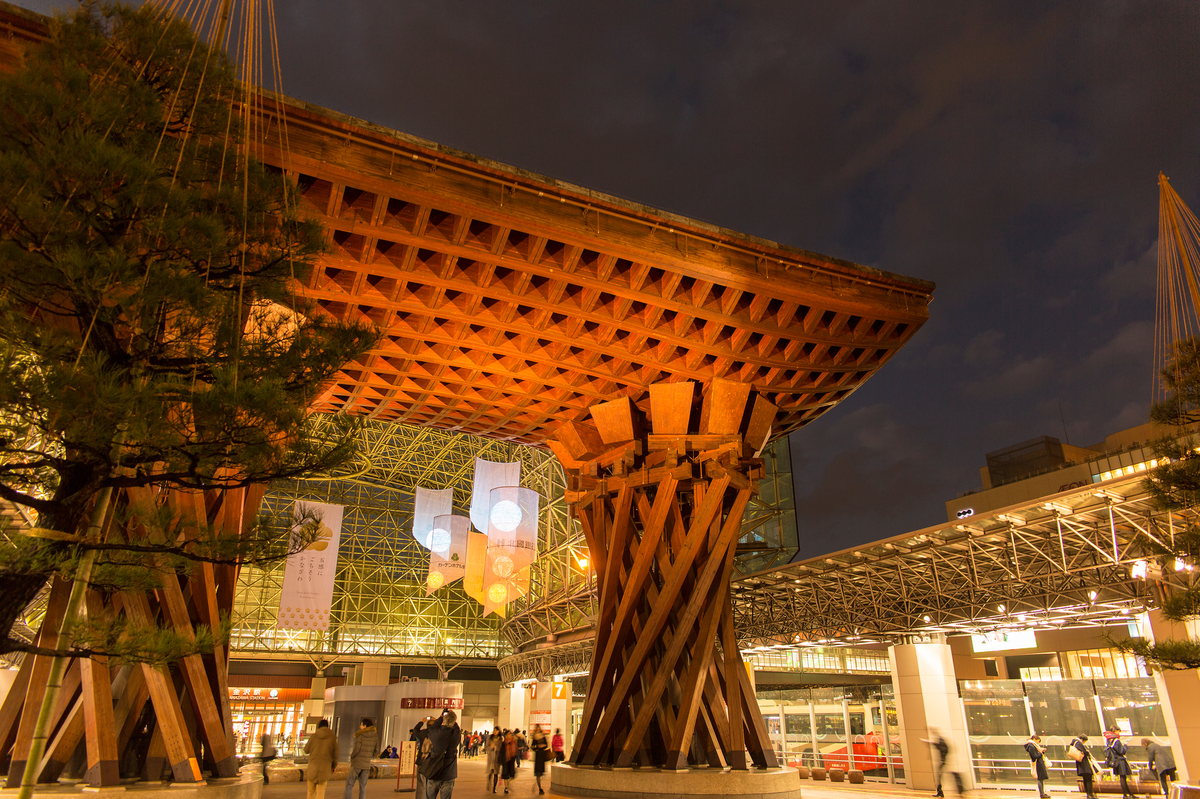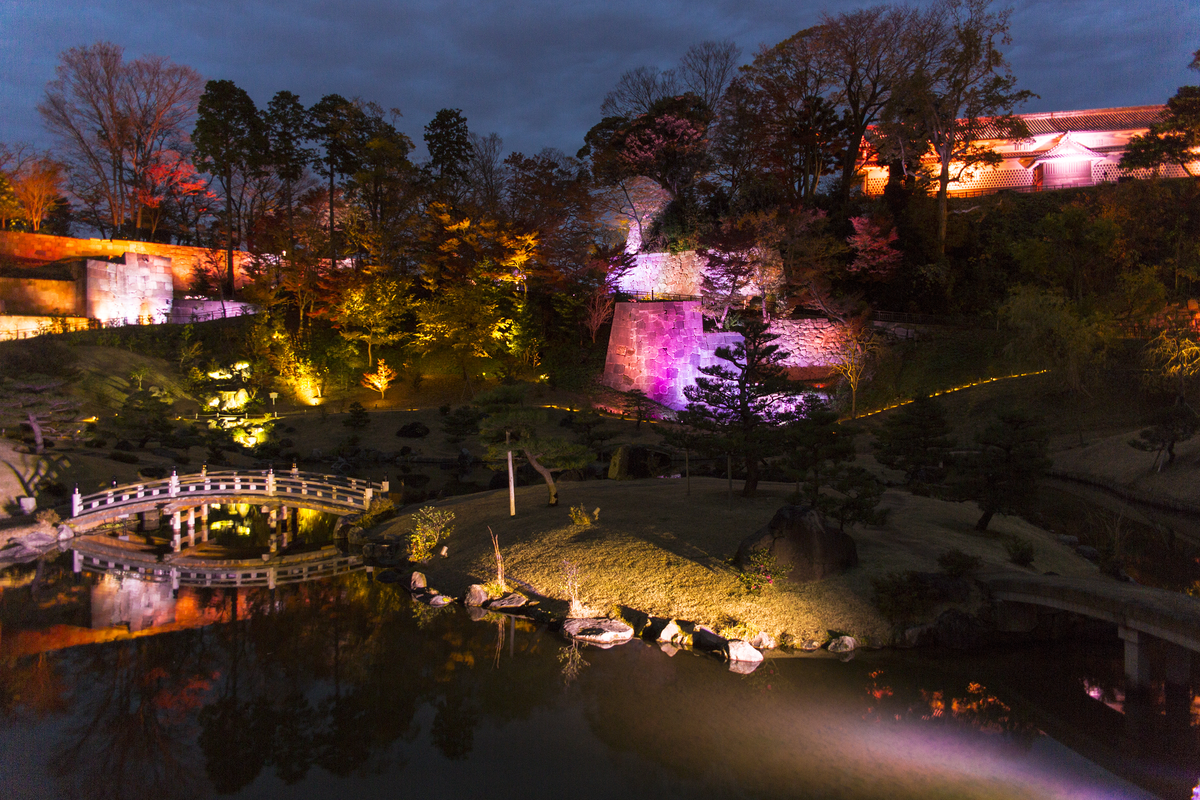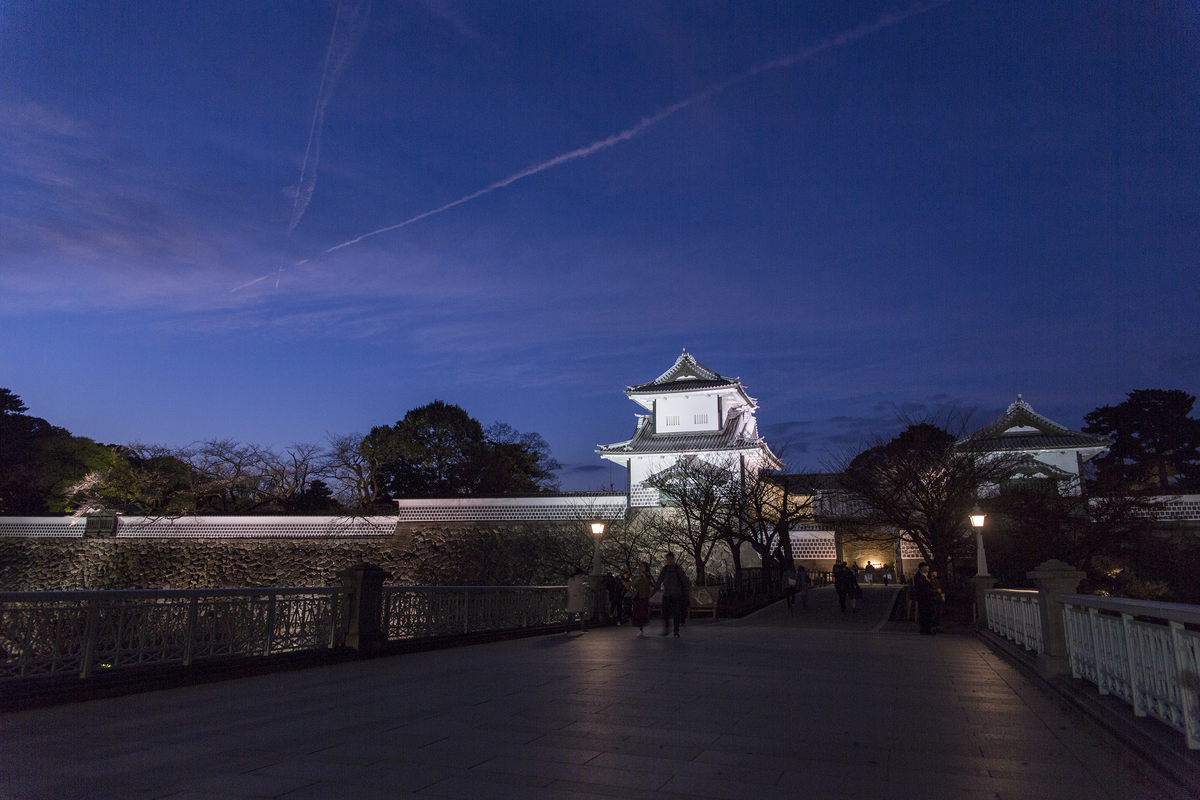02_Kanazawa Sightseeing Map
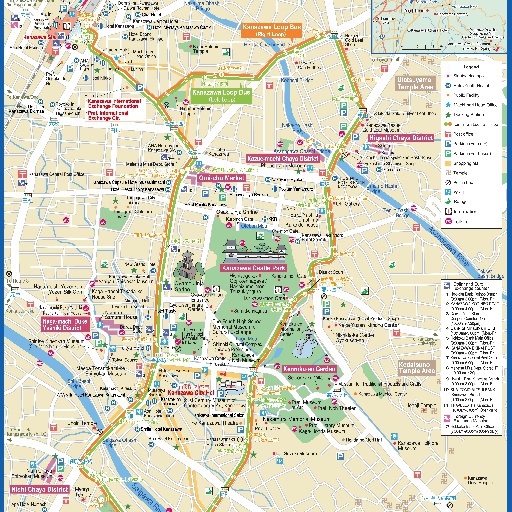
Check out these maps from Kanazawa, aimed to make your trip more fun by using your smartphone! Not only will you find sightseeing spots and recommended walking/jogging routes, but you can travel back to the Edo period and explore the changes. Don't worry about getting lost, as you will be able to see your GPS location at all time while enjoying the local charm of Kanazawa.
 Posted byJTB-mapperUpdated:
Posted byJTB-mapperUpdated: All spots information
48 spots
 4.Cityscape / Architecture
4.Cityscape / Architecture
Teramachi Temple Area
![]() 4.Cityscape / Architecture
4.Cityscape / Architecture

One of the Three Temple Districts of Kanazawa The Maeda family, who ruled the Kaga Domain (the present Ishikawa and Toyama areas) in feudal times, gathered temples in three areas when the family built the castle town. Approximately 70 temples are located close together in the Tera-machi Temple Area. Comparatively big temples are located in line along the main street, and the view of the black roof tiles and mud walls of the temples and the big trees in the precincts is a scene suitable to the name of Tera-machi (literary means "temple town"). The back street is dotted with small temples, where you can enjoy a quiet walk. Address1-2-12 No-machi --> URLhttp://www.kanazawa-kankoukyoukai.or.jp/course/temples/shizune/index_en.html Business Hours9 am to 4:30 pm (until 4 pm in winter season) *A reservation by telephone is required. ClosedJanuary 1, Buddhist service days Admission FeeAdult : 1000 yenschoolchild: 700 yen -->
Nishi Chaya District
![]() 4.Cityscape / Architecture
4.Cityscape / Architecture
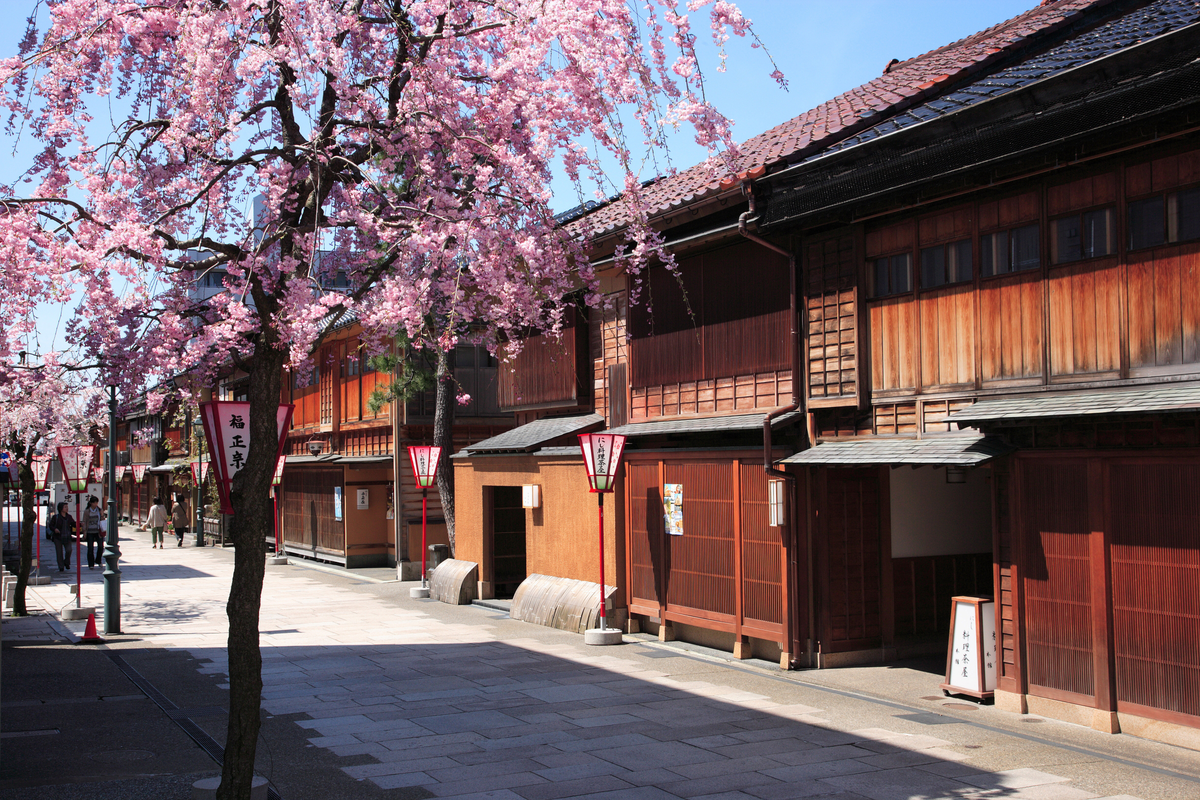
One of the Three Chaya Districts of Kanazawa The Nishi Chaya District is one of the three geisha (traditional female Japanese entertainers) districts of Kanazawa, and located 500 m away from the Saigawa Ohashi Bridge in the central part of the city. Chaya is a traditional place of feasts and entertainment. You can find a number of two-story wooden chaya houses along the main street. At the time of twilight, you may hear the sound of the shamisen (a three-stringed musical instrument) and strongly feel the atmosphere of the Kanazawa-like chaya machi. The Kanazawa Nishi Chaya Shiryokan Museum is a building reproducing a chaya house, where you can see the guest room of the chaya house.Sightseeing volunteer guides stand by here, guide visitors around the Nishi Chaya district, and give information on local sightseeing spots for free Address2-25-18 No-machi URLhttp://www.kanazawa-kankoukyoukai.or.jp/course/temples/index_en.html --> Business Hours9:30 am to 5 pm ClosedOpen 365 days a year Admission FeeFree
Utatsuyama Temple Area
![]() 4.Cityscape / Architecture
4.Cityscape / Architecture

The Utatsuyama Temple Area is one of the temple districts in Kanazawa, crowded with more than 50 temples and shrines. The Maeda family, who ruled the Kaga Domain (the present Ishikawa and Toyama areas), collected shrines and temples in these districts. It is within a short walking distance from the Higashi Chaya district to the foot of the mountain, where a long and winding alley and slope continues, and you will see old shrines and temples one after another along the alley. It is a quiet walk course where your heart will settle down. The shortest course is 2.6-kilometer long, which takes approximately 90 minutes to visit 12 temples and shrines. You can enjoy a variety of courses according to your convenience. Visitors can see the interiors of some of the temples and shrines. Address1-3-10 Higashiyama --> URLhttp://www.kanazawa-kankoukyoukai.or.jp/course/temples/index_en.html Business Hours9:30 am to 5 pm (Visitors must enter by 4:30 pm.) ClosedExhibit changes from Dec. 29 to Jan. 3 Admission FeeAdult : 300 yen group (20 persons min.) : 250 yen per person person of 65 years old or over : 200 yen person below high-school age : Free -->
Omi-cho Market
![]() 4.Cityscape / Architecture
4.Cityscape / Architecture

The Omi-cho Market was established about the middle of the 18th century. Since then, it has been supporting the gastronomic culture of Kanazawa for more than 280 years. There are as many as 170 stores including a large number of fish stores that sell fresh fish and seafood caught in the Sea of Japan, vegetable stores that sell unique Kaga vegetables, fruit stores, dried food and marine product stores, grocery stores, and clothing stores besides restaurants. Crabs, yellowtail, and small shrimp from the Sea of Japan that are sold around November, in particular, are highly evaluated in Japan. The market is crowded with residents and tourists during the season. More than 10 tenants including restaurants and drugstores are in operation in the redevelopment building named Omi-cho Ichibakan. AddressAokusa-machi and its vicinity Contact Omi-cho Market Promotion Association URLhttp://ohmicho-ichiba.com Business Hours9 am to 5:30 pm (varying with each store) ClosedNational holidays, Jan. 1 to 4, and around Aug. 15 Admission FeeFree -->
Yuwaku Hot Spring
![]() 4.Cityscape / Architecture
4.Cityscape / Architecture
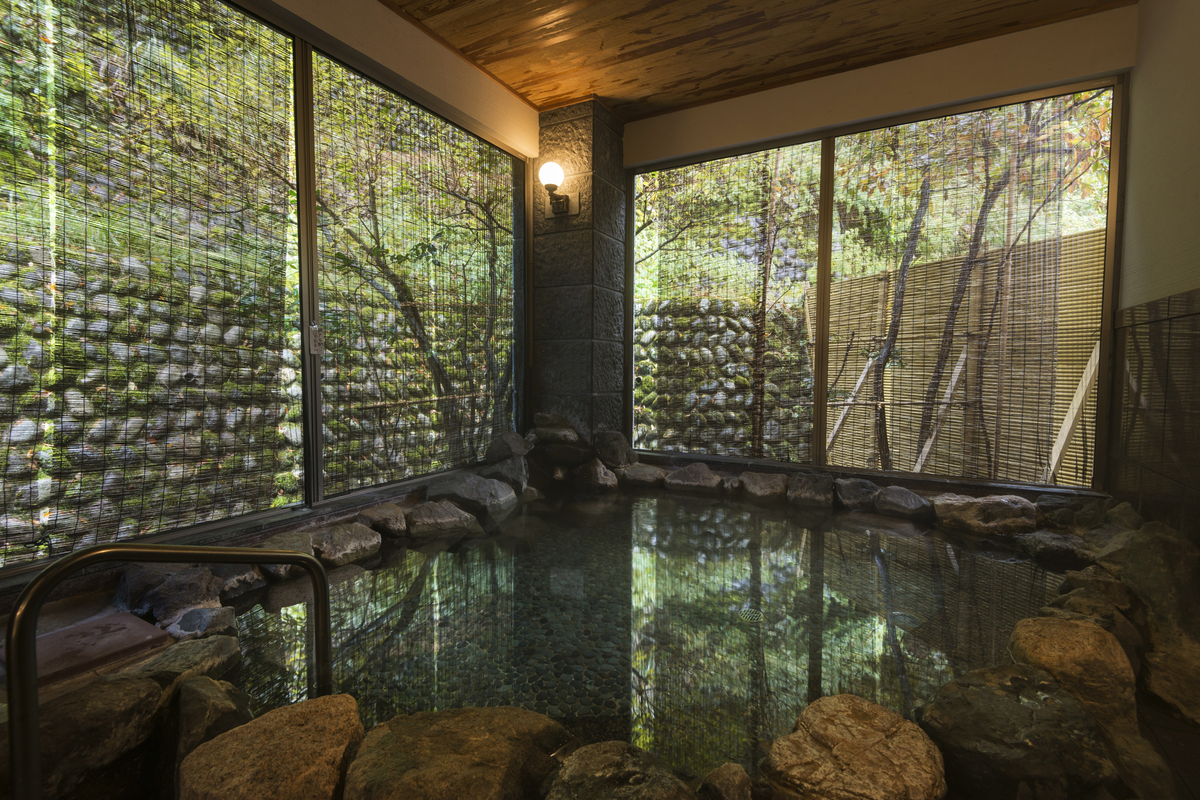
Deep in the Mountains of Kanazawa The Yuwaku hot spring is a mountainous resort located in the southeast of Kanazawa. It takes 30 minutes by car from Kanazawa Station. It was once used as a hidden hot spring of the Maeda family, who ruled Kaga Province in feudal times. It is a hypotonic, mildly alkaline hot spring with clear and colorless water quality. The area is surrounded by seasonal changes in the scenery, such as fresh green, autumn leaves, and a snow-covered landscape. There are nine comparatively small hot spring inns in the area. People can enjoy a one-day trip bathing in the public bathhouse named Shirasaginoyu. AddressYuwaku Onsen Tourism Association I-1, Yuwaku-machi URLhttp://www.yuwaku.gr.jp/
Shinise Memorial Hall
![]() 4.Cityscape / Architecture
4.Cityscape / Architecture

The Shinise Memorial Hall is an institution that restored Nakaya Chinese Pharmacy, which was established in 1579. This is a good example of a traditional merchant's shop during the Edo period. The first floor served as a storefront. The second floor serves as a showcase for traditional crafts and wedding-related goods exhibited by 100-year-long established stores of Kanazawa. Address2-2-45 Naga-machi URLhttp://www.kanazawa-cci.or.jp/shinise/memorialhall Business Hours9:30 am to 5 pm (Visitors must enter by 4:30 pm) ClosedOpen 365 days a year Admission FeeAdult : 100 yen; person of high school age or below : Free
D.T.Suzuki Museum
![]() 4.Cityscape / Architecture
4.Cityscape / Architecture
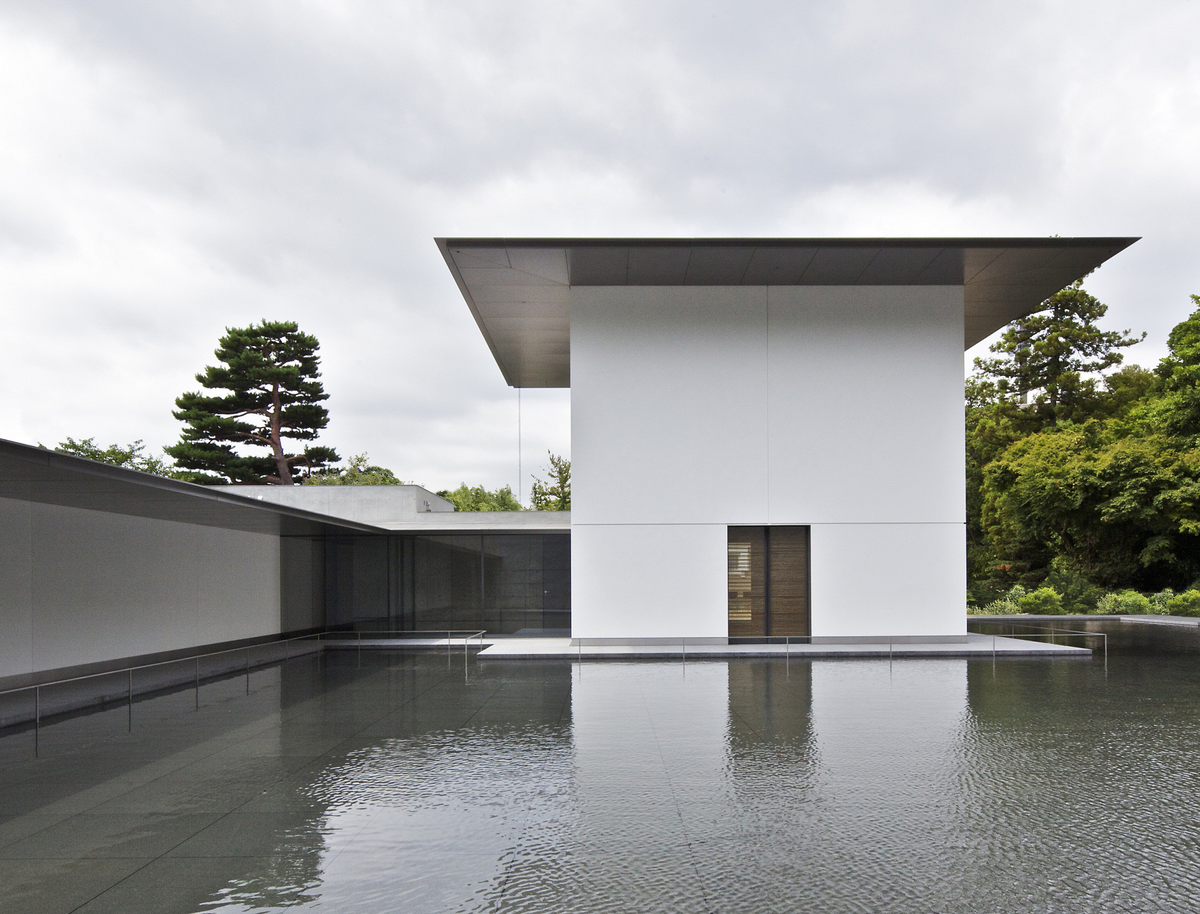
Daisetz Suzuki, known internationally as D.T. Suzuki, is a Kanazawa-produced buddhist philosopher. The museum building is located next to his place of birth, and comprises three wings: the Entrance Wing, the Exhibition Space Wing, and the Contemplation Space Wing, and three gardens: the Vestibule Garden, the Water Mirror Garden and the Roji Garden. In addition to the appreciation of the exhibits, the museum also serves as a place of reflection for visitors as they encounter the life and philosophy of Daisetz Suzuki. Address3-4-20 Honda-machi URLhttp://www.kanazawa-museum.jp/daisetz/english Business Hours9:30 am to 5 pm (Visitors must enter by 4:30 pm) ClosedMondays (Next day if Monday falls on a holiday) and Dec. 29 to Jan. 3, Preparation periods of exhibit change. Admission Fee Adult : 300 yen; group (20 persons min.) : 250 yen per person; person of 65 years old or over : 200 yen; person below high-school age : Free
Kanazawa Station
![]() 4.Cityscape / Architecture
4.Cityscape / Architecture
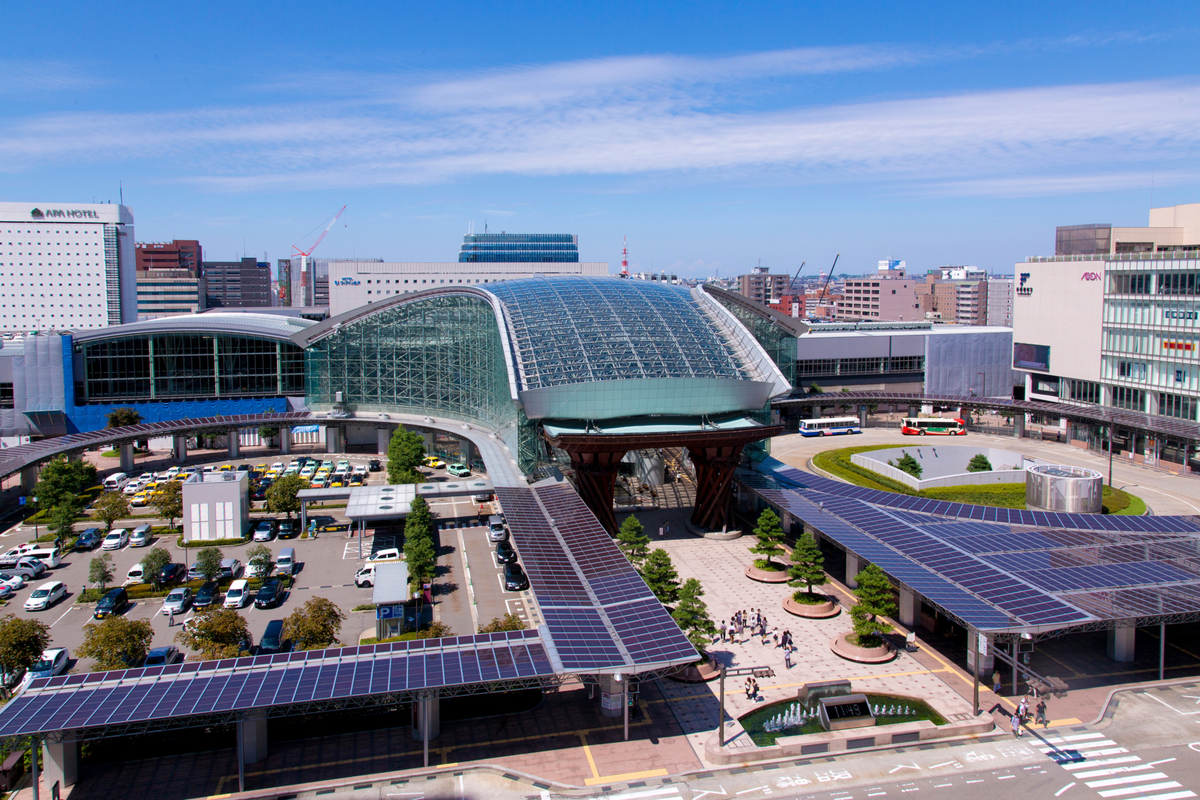
Kanazawa Station is JR West Railway's major station located in Kanazawa. The reconstruction of the surrounding area is still making progress for the extension of the Hokuriku Shinkansen (a bullet train) from Kanazawa to Osaka. There is a glass dome called "Motenashi (Welcome) Dome," which looks like a huge umbrella, at the east entrance of Kanazawa Station. The dome has a wooden gate called "Tsuzumi-mon," which symbolizes a traditional Japanese instrument called tsuzumi (hand drums). The underground of the dome serves as an information corner and event space. In recent years, the area has become a busier shopping quarter with the construction of large-sized shopping buildings. Address1-1 Kinoshinbo-machi
 6.illuminated spots
6.illuminated spots
The Fourth High School Memorial Museum of Cultural Exchange
![]() 6.illuminated spots
6.illuminated spots
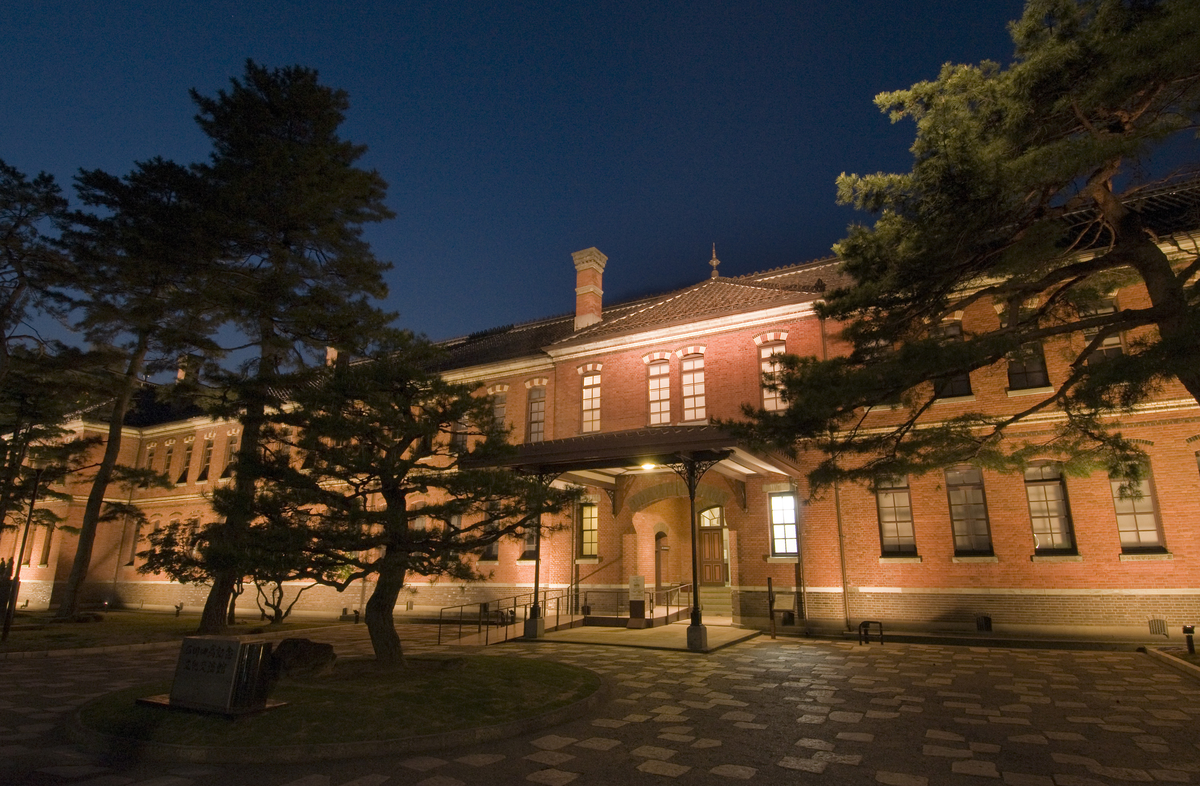
No description available
 1.Garden / Park
1.Garden / Park
Kenroku-en Garden
![]() 1.Garden / Park
1.Garden / Park

One of Japan's Three Most Beautiful Gardens Kenrokuen Garden is a beautiful Japanese garden with an area of 11.4 hectares located on the heights of the central part of Kanazawa and next to Kanazawa Castle. The Maeda family, who ruled the Kaga Clan (the present Ishikawa and Toyama areas) in feudal times, maintained the garden from generation to generation. From its scale and beauty, it is regarded as one of the most beautiful feudal lords' gardens in Japan. Kenrokuen Garden has a big artificial pond, and hills and houses are dotted in the garden. Visitors can appreciate the whole, dropping in at them. The big pond called "Kasumigaike" was compared to an open sea, and an island, on which an ageless hermit with miraculous power was believed to live, was constructed in the pond in hope of the long life and eternal prosperity of the lord. Kenrokuen, which means "having six factors", was given the name because of the six attributes that bring out the perfect landscape of the garden: spaciousness, tranquility, artifice, antiquity, water cources, and magnificent view from the garden. There is a stone lantern designed in the image of the Japanese koto (harp) by the pond, which becomes the symbol of Kenrokuen Garden. There is a fountain created using the natural pressure of water flowing from the higher pond. Visitors can enjoy the beauty of the flowers and trees, such as plum and cherry blossoms in spring, azaleas and irises early in summer, and colorful red and yellow leaves in autumn. Besides, visitors will have a glorious view of seasonal natural beauty including the snow-covered landscape with yukitsuri (literally means snow hanging), which is performed for approximately one month from November 1 every year. This is a method of protecting the branches of the pine trees in the garden with ropes attached in a conical array to the trees in order to prevent the branches from breaking. Address1-4 Kenroku-machi URLhttp://www.pref.ishikawa.jp/siro-niwa/kenrokuen/e/index.html Business Hours7 am to 6 pm (8 am to 5 pm from Oct. 16 toend of Feb.) Admission FeeAdult : 310 yen; person of 6 to 17 years old : 100 yen; person of 65 years old or over : Free (ID required)
Kanazawa Castle Park
![]() 1.Garden / Park
1.Garden / Park

Ruins of Castle Where Maeda Family of Kaga Clan Resided In 1583, Lord Maeda Toshiie, who was Toyotomi Hideyoshi's first retainer, moved to Kanazawa. The Maeda family resided in Kanazawa Castle and governed the Kaga Clan (the present Ishikawa and Toyama areas) for more than 280 years henceforth. The castle tower was burned down by a fire in the past and has not been rebuilt, but other fortress buildings were reconstructed repeatedly. The Ishikawamon Gate, which was rebuilt in 1788, and the Sanjikken Nagaya (50-yard-long warehouse), which was rebuilt in 1858, still remain. Both of them have been designated as Japan's important cultural assets. The place was used as a base of the Japanese army. Later, Kanazawa University used it as a campus. The place was repaired in 1996, and the Hishiyagura (diamond-shaped turret), Gojikken Nagaya (90-yard-long warehouse), and Hashizumemon Tsuzuki Yagura (turret protecting the nearby gate) were restored and the park opened. In the time of the Maeda family, moats surrounded Kanazawa Castle. The castle had a fort function with loopholes for matchlocks on the outer wall to defend the castle from enemies. The beautiful white tiles that grace the roof are weathered lead and the wall is made of white mortar with flat tiles attached to it. The stone walls vary in type with each place, and it is apparent that the stonewalls were built in separate periods. The stone walls include those built more than 400 years ago. - Hishiyagura, Gojikken Nagaya, and Hashizumemon Tsuzuki Yagura The Hishiyagura (diamond-shaped turret), Gojikken Nagaya (90-yard-long warehouse), and Hashizumemon Tsuzuki Yagura (turret protecting the nearby gate) are large-scale wooden castle buildings reproducing the original sights of approximately 125 years ago. The turrets on the right and left to watch the gate are connected with the Gojikken Nagaya. The traditional construction method and the roles of the castle in those days are introduced in the buildings. - Kahokumon-gate The reconstruction of the Kahokumon-gate, which had disappeared 130 years ago, was completed in Japan's traditional construction methods based on historical facts. The Kahokumon-gate, which is virtually the main gate of Kanazawa Castle, is located down Kahokuzaka Hill past the Otemon-gate of Kanazawa Castle. The Kahokumon-gate, Ishiwakamon-gate, and Hashizume-mon gate are regarded as the three major gates of Kanazawa Castle. The interior of the gate is open to the public for free. - Gyokusen 'inmaru garden In 1634, the third lord of the Maeda family, who ruled the Kaga Clan (the present Ishikawa and Toyama areas) during the feudal times, started to construct the garden. Although it was destroyed at the end of the feudal times, the garden was reconstructed in 2015. Light-up : every Friday, Saturday and day before national holidays, starting after sunset until 9:00 pm Address1-1 Marunouchi URLhttp://www.pref.ishikawa.jp/siro-niwa/kanazawajou/e/index.html Business Hours7 am to 6 pm (8 am to 5 pm from Oct. 16 to end of Feb.) -Open 365 days a year Admission Feefree
 2.Historical Spot / Cultural facility
2.Historical Spot / Cultural facility

Kaikaro is a refurbished chaya house originally existed more than 180 years ago. The interior of the house includes vermilion-lacquered stairs, vegetable-dyed tatami (mats made of woven straw), fusuma-e (paintings on sliding-door panels) created by a contemporary artist, and a Japanese tearoom with tatami made of gold-laced woven straw, all of which have reproduced the atmosphere of the chaya house in those days with a contemporary feeling. Kaikaro offers a tea service around a sunken hearth, has a souvenir shop, and occasionally holds a guestroom experience time with geisha's attendance. Address1-14-8 Higashiyama URLhttp://www.kaikaro.jp/eng/ Business Hours9 am to 5 pm ClosedOpen 365 days a year Admission FeeAdult: 750 yenperson of 7 to 18 years old: 500 yenunder 6 years old: free * An extra charge is required for the tea service.

SHIMA is a chaya house built simultaneously with the construction of the Higashi Chaya district in 1820. This house is a precious chaya construction that has been designated as Japan's important cultural asset. The guestrooms and waiting room on the second floor with no closets, small courtyard, and other parts of the building that are used as a place of entertainment are stylish. A green tea service (with Japanese sweets) is offered at the courtyard. The Teahouse Culture Hall, which exhibits traditional musical instrument and tools used by geisha (traditional female Japanese entertainers), opened in the alley. (1-13-7 Higashiyama Tel. 252-0887; fax. 252-0883) Address1-13-21 Higashiyama URLhttp://www.ochaya-shima.com/english Business Hours9 am to 6 pm ClosedOpen 365 days a year Admission Fee Adult: 500 yenperson of 16 years old and below : 300 yen *An extra charge is required for the green tea service (with Japanese sweets).
Higashi Chaya Kyukeikan Rest House
![]() 2.Historical Spot / Cultural facility
2.Historical Spot / Cultural facility

This rest station for tourists reproduces a town house of the latter half of the 19th century. Sightseeing volunteer guides stand by here, guide visitors (in Japanese only) around the Higashi Chaya district, and give information on local sightseeing spots. Address1-5-14 Higashiyama URLhttp://www.kaikaro.jp/eng/ --> Business Hours9 am to 5 pm ClosedOpen 365 days a year Admission FeeFree
Kanazawa Yasue Gold Leaf Museum
![]() 2.Historical Spot / Cultural facility
2.Historical Spot / Cultural facility

This museum focuses on and exhibits gold beating tools and artistic handicraft articles collected by Komei Yasue, a famous gold leaf artisan. Visitors can see the manufacturing process of gold leaves. The museum exhibits a large number of works including folding screens, Noh costumes, Kutani porcelain, a Kanazawa Buddhist altar, Kaga lacquer work, and Kaga incrustation work. Address1-3-10 Higashiyama URLhttp://www.kanazawa-museum.jp/kinpaku/ Business Hours9:30 am to 5 pm (Visitors must enter by 4:30 pm.) ClosedExhibit changes from Dec. 29 to Jan. 3 Admission FeeAdult : 300 yen group (20 persons min.) : 250 yen per person person of 65 years old or over : 200 yen person below high-school age : Free
Buke Yashiki Terashima Kurando-house
![]() 2.Historical Spot / Cultural facility
2.Historical Spot / Cultural facility

Kurando was a middle-class samurai of the Maeda family. It is said that this house was constructed in the latter half of the 18th century. The existing mansion, storehouse, and mud wall tell the actual condition of the middle-class samurai residence. Dodan tsutsuji (a kind of azalea), which blooms from the end of April until early in May and the autumn leaves are the highlights of the garden. Kurando was a painter as well, and his works are exhibited in the house. Address10-3 Ote-machi URLhttp://www.kanazawa-museum.jp/terashima/ Business Hours 9:30 am 5:00 pm (Visitors must enter by 4:30 pm.) Closed Dec. 29 to Jan. 3 Admission Fee Adult: 300 yen;person of 65 years old or over : 200 yen; junior high school student and schoolchild: free;
Ashigaru Shiryokan Museum
![]() 2.Historical Spot / Cultural facility
2.Historical Spot / Cultural facility

The houses of the Shimizus and Kozais, who were infantry families, were reconstructed in this place. Here, visitors' will know the simple lives of infantries who lived in humble houses with a yard. Address1-9-3 Naga-machi Business Hours9:30 am to 5 pm ClosedOpen 365 a year Admission FeeFree
Kaga Hanshi Takada-ke House Site
![]() 2.Historical Spot / Cultural facility
2.Historical Spot / Cultural facility

The nagayamon gate (row house gate) of the Takadas, a middle-class samurai family, has been open to public since it was restored. The nagayamon gate incorporates a servant room and stable. Visitors will know the roles of middle-class samurais and their servants and lives in those days. The garden having the pond in round-the-pond style with water taken from the Onosho canal is one of the highlights of the remains. Address2-6-1 Naga-machi URLhttp://www.oyama-jinja.or.jp --> Business Hours9:30 am to 5 pm ClosedOpen 365 a year Admission FeeFree
Naga-machi Buke Yashiki Kyukeikan Rest House
![]() 2.Historical Spot / Cultural facility
2.Historical Spot / Cultural facility

The institution surrounded by mud walls is rest facilities for tourists, and provided with a lobby and restrooms. Sightseeing volunteer guides stand by here and guide visitors (in Japanese only) around the Naga-machi samurai (feudal powerful military class) residential areas. Address2-4-36 Naga-machi Business Hours9:00 am to 5 pm ClosedOpen 365 a year Admission FeeFree
Nomura Samurai House
![]() 2.Historical Spot / Cultural facility
2.Historical Spot / Cultural facility

The remains of the Nomura family are also open to public. The family successively held executive posts from generation to generation under rule of the Maeda family. The house has a coffered ceiling totally made of Japanese cypress and fusuma-e (paintings on sliding-door panels) created by the Maeda family's personal painter. The garden inside the residence has a Japanese bayberry over 400 years old and a meandering stream surrounded by ancient and strangely shaped rocks. Address1-3-32 Naga-machi URLhttp://www.nomurake.com/ Business Hours8:30 am to 5:30 pm (until 4:30 pm from October to March) ClosedDec. 26 to 27 Admission Fee Adult: 550 yen; high school student: 400 yen; junior high school student and schoolchild: 250 yen; a 50 yen discount for a group of 20 or more people
Nakamura Memorial Museum
![]() 2.Historical Spot / Cultural facility
2.Historical Spot / Cultural facility

The Nakamura family, who has been running a brewery in Kanazawa, moved and modified their own residence here, exhibited and opened their collection to public. Later, the museum was donated to Kanazawa City. Centering on noted articles of Japanese tea ceremony arts, the museum exhibits calligraphic works, paintings, lacquer ware, and pottery. There are a number of two or more Japanese tearooms used for tea ceremonies. Address3-2-29 Honda-machi URLhttp://www.kanazawa-museum.jp/nakamura/ Business Hours9:30 am to 5 pm (Visitors must enter by 4:30 pm) ClosedExhibit changes from Dec. 29 to Jan. 3 Admission Fee Adult : 300 yen; group (20 persons min.) : 250 yen per person; person of 65 years old or over : 200 yen; person below high-school age : Free
Kanko Bussankan (Local Products Shop)
![]() 2.Historical Spot / Cultural facility
2.Historical Spot / Cultural facility

Traditional products of Ishikawa Prefecture, such as handicrafts, sweets, food, and local brands of sake (rice wine) from approximately 70 long-established stores, are exhibited and sold. An experience menu with the following items is also prepared. - Production experience of Japanese Confectionary: 1,230 yen (including a 500-yen shopping coupon) for the production of Japanese sweets (30 minutes). * Reservations recommended. *6 sessions on Saturdays, Sundays and National Holidays (Jan. to Nov.) except New Years days *1 session on weekdays (except Tuesdays of Jan. and Feb.) *1 session on Mondays, Saturdays, Sundays and National holiday in Dec. A group of 20 or more visitors may use the service on any day subject to reservation. - Experiencing the designing of Kaga Hachiman Okiagari: 1,030 yen for experiencing the designing of Kaga Hachiman Okiagari, a lovely local doll completely handcarfted. (30 minutes). No reservation is required. *A group of 5 or more visitors needs a reservation. *everyday , 11 am to 4 pm (except Tuesdays). *A group of 20 or more visitors may use the service on any day subject to reservation. - Gold-laced sandblasted glass: 1,230 yen for experiencing sandblasting the participant's name on glass (40 to 60 minutes). A group of 5 or more visitors needs a reservation. *everyday , 10 am to 5 pm (except Tuesdays of Dec. to Feb.). Address2-20 Kenroku-machi URLhttp://kanazawa-kankou.jp/ Business Hours10 am to 6 pm ClosedTuesdays of Dec. to Mar Admission FeeAdult : 310 yen; schoolchild and junior high school student : 210 yen -->
Kaga Yuzen Kimono Center
![]() 2.Historical Spot / Cultural facility
2.Historical Spot / Cultural facility

Kaga Yuzen is characterized by its distinctive use of color and vivid patterns for kimonos. This hall introduces the manufacturing process of Kaga Yusen, a typical traditional craft of Kanazawa, and sells finished products as well. Artisans' coloring demonstration is performed, and the following experience menu (subject to reservation) is prepared as well. Kimono wearing experience: 2,000 yen including admission fee and commemoration photography after dressing (20 minutes). - Strolling in kimono: 4,500 yen including admission fee and one-hour stroll after dressing (20 minutes) or 6,000 yen including admission fee and three-hour stroll after dressing (20 minutes). - Yuzen dyeing experience: From 1,620 yen for dyeing Yuzen-patterned handkerchief Address8-8 Kosho-machi URLhttp://www.kagayuzen.or.jp/english/ Business Hours9 am to 5 pm ClosedWednesdays (Open on national holidays), Year-end and New Year's holidays. Admission FeeAdult : 310 yen; schoolchild and junior high school student : 210 yen
Seisonkaku Villa
![]() 2.Historical Spot / Cultural facility
2.Historical Spot / Cultural facility

Seisonkaku is a villa that the 13th lord of the Maeda family built for his mother in Kenrokuen Garden in 1863. Fine techniques in a wide variety are used for the inner pillars and walls of Seisonkaku. These techniques include a wooden panel with openwork carvings of flowers and birds and a coffered ceiling for the guest chamber called "Ekken-no-ma." From these, visitors will know the status of the then Maeda family. Furthermore, Seisonkaku exhibits articles with a long and distinguished history, such as dolls for the Japanese Girls' Festival and furniture. Address1-2 Kenroku-machi URLhttp://www.seisonkaku.com/english Business Hours9 am to 5 pm (Visitors must enter by 4:30 pm.) ClosedWednesdays (Next day if Wednesday falls on a holiday) and Dec. 29 to Jan. 2 Admission FeeAdmission fee Adult : 700 yen; junior high or high school student : 300 yen; schoolchild : 250 yen
 3.Museum / Art Museum
3.Museum / Art Museum
Pref. Museum of Art
![]() 3.Museum / Art Museum
3.Museum / Art Museum

The Ishikawa Prefectural Museum of Art exhibits antique art objects, articles possessed by the Maeda family, Japanese paintings, oil paintings, sculptures, and modern handicrafts related to Ishikawa Prefecture. Traditional arts and crafts of artisans designated as Living National Treasures, a collection of Kutani porcelain works, and daimyo tools (feudal lord tools), such as Kaga lacquer works, are the highlights of the museum. Address2-1 Dewa-machi URLhttp://www.ishibi.pref.ishikawa.jp/e_home/ Business Hours9:30 am to 6 (The coffee shop is open until 7 pm) ClosedYear-end and New Year holidays, Preparation periods of exhibit change Admission FeeStanding exhibition; Adult : 360 yen; university student : 290 yen; person of high school age or below : Free
21st Century Museum of Contemporary Art, Kanazawa
![]() 3.Museum / Art Museum
3.Museum / Art Museum

The 21st Century Museum of Contemporary Art, Kanazawa as a new-style art museum different in image from conventional art museums was opened in October 2004. This art museum is round in shape as if it were the sight of a UFO that has touched down, all the walls are made of glass, and the building has five gates, which looks like a part opened in all street directions. The museum exhibits experiment-type contemporary arts that visitors can touch or sit on, and includes zones where visitors can enter free. Both adults and children can experience an excited time in the museum. Some of the highlights of the museum are commissioned works, i.e., arts integrated with the building structure. These arts include a work that enables visitors to feel as if they stand on the bottom of a swimming pool, the surface of a wall colored with flowers gathered from the suburbs of Kanazawa, and a room with an opening on the ceiling through which visitors can see the changes of the sky. The museum's shop offers a wide variety of products, such as original items in the image of the museum, accessories, and selected goods. Address1-2-1 Hirosaka URLhttp://www.kanazawa21.jp/en/ Business Hours10 am to 6 pm (closing at 8 pm on Fridays and Saturdays) ClosedMondays (Nexts day if Monday falls on a holiday), New Year holidays *Visitors can enter the free zone from 9 am to 10 pm everyday including Mondays. Admission FeefreeAround 1,000 yen (for the art museum zone including special exhibits and standing exhibits, and the fee varies with the special exhibition).
Kanazawa Noh Museum & Kanazawa Crafts Hirosaka
![]() 3.Museum / Art Museum
3.Museum / Art Museum

Noh (a major form of classic Japanese musical drama) of the Hosho School has been promoted among people in Kanazawa since the Edo period. Kaga Hosho, which is originated in Kanazawa, tells that Kanazawa is a prosperous ground of Noh Theater. The Kanazawa Noh Museum introduces the structure of Noh Theater with an actual stage reproducing Noh play. Besides, the museum exhibits Kaga Hosho's precious Noh masks and costumes handed down over generations. Address1-2-25 Hirosaka URLhttp://www.kanazawa-noh-museum.gr.jp Business Hours10 am to 6 pm (Visitors must enter by 5:30 pm) ClosedMondays (Next day if Monday falls on a holiday) and Dec. 29 to Jan. 3. Admission FeeAdult : 300 yen; group (20 persons min.) : 250 yen per person; person of 65 years old or over : 200 yen; person below high-school age : Free Kanazawa Crafts Hirosaka Traditional handicrafts in a wide variety have been inherited by Kanazawa, besides nationally famous traditional handicrafts, such as Kanazawa gold leaf, Kutani porcelain, and Kaga Yuzen. Kanazawa Crafts Hirosaka exhibits and sells rare traditional handicrafts and glass craftworks, such as Kaga incrustation works, Kaga fishing flies, Futamata's Japanese paper, Kaga-nui (traditional embroidery specific to the Kaga province), paulownia handicrafts, wagasa (traditional Japanese bamboo and paper umbrellas), and Kaga mizuhiki (gift wrapping strings). Address1-2-25 Hirosaka URLhttp://www.kanazawa-noh-museum.gr.jp Business Hours10 am to 6 pm (Visitors must enter by 5:30 pm) ClosedMondays (Next day if Monday falls on a holiday) and Dec. 29 to Jan. 3. Admission FeeAdult : 300 yen; group (20 persons min.) : 250 yen per person; person of 65 years old or over : 200 yen; person below high-school age : Free
 5.Shrine / Temple
5.Shrine / Temple
Tentokuin Temple
![]() 5.Shrine / Temple
5.Shrine / Temple

Maeda Toshitsune, the 3rd Lord of the Maeda family, married to Tamahime, a granddaughter of Tokugawa Ieyasu (the first shogun) in order to keep good a relationship with the central government (Tokugawa Shogunate). Tentokuin Temple was constructed as the family temple of Tamahime in the first half of the 17th century. The solemn gate of the temple that has been maintained since the time of foundation is a highlight. A visit inside the building is charged, and visitors can enjoy a story of Tamahime played with fancy dolls inside the temple. Address4-4-4 Kodatsuno URLhttp://tentokuin.arunke.biz Business Hours 9 am to 4:30 pm (until 4 pm from December to February) ClosedWednesdays from Dec. to Feb., Dec. 29 to Jan. 3 Admission FeeAdult : 500 yen junior high school student: 300 yen schoolchildren: 200 yen *A 10% discount for a group of 30 or more people.
Myoryuji Temple (Ninjadera Temple)
![]() 5.Shrine / Temple
5.Shrine / Temple

Myoryuji Temple was built as a prayer place of the Kaga Domain soon after Lord Maeda Toshiie, founder of the Kaga Domain, moved to Kanazawa Castle. Later, in preparation for an emergency attack of the central government (Tokugawa Shogunate), the Maeda family considered the temples in Tera-machi as a shield. Then the family added a number of functions to Myoryuji Temple so that it would work as a lookout post and fort. To countermeasure the invasion of enemies, Myoryuji Temple is provided with a variety of mechanisms. That is why this temple is also called Ninja Temple. Address1-2-12 No-machi URLhttp://www.myouryuji.or.jp/en.html Business Hours9 am to 4:30 pm (until 4 pm in winter season) *A reservation by telephone is required. ClosedJanuary 1, Buddhist service days Admission FeeAdult : 1000 yenschoolchild: 700 yen
Oyama Jinja Shrine
![]() 5.Shrine / Temple
5.Shrine / Temple

The shrine that enshrines Maeda Toshiie was moved to the present location in 1873. The main gate is a peculiar mix of traditional Japanese, Chinese, and European religious architectural elements. This gate, which was designated as Japan's important cultural assets, was completed in 1875. One of the highlights of Oyama Shrine is the garden in round-the-pond style with an artificial island and bridge in the images of old musical instruments, such as the biwa (Japanese short-necked fretted lute). Address11-1 Oyama-machi URLhttp://www.oyama-jinja.or.jp Business Hours9:00 am to 5 pm ClosedOpen 365 a year Admission Fee Adult: 550 yen; high school student: 400 yen; junior high school student and schoolchild: 250 yen; a 50 yen discount for a group of 20 or more people -->
Daijoji Temple
![]() 5.Shrine / Temple
5.Shrine / Temple

Daijoji Temple is a Zen temple that is located halfway up Nodayama. After the construction of this temple in 1262, the temple moved to its present location through the change of times in the latter half of the 17th century. The gate of the temple leads to a Buddha hall, kitchen, meditation hall, and lecture hall that are connected through a corridor. This temple is still a place where monks practice asceticism (extreme self-denial and austerity). The precincts of the temple are open to public, and a seminar in Zen meditation for people is held regularly. Address10 Ru, Nagasaka-machi URL http://www.daijoji.or.jp/ Business HoursZen meditation starts 4:30 am every day (Visitors can observe a Buddhist memorial service after an hour's Zen meditation) starts 1:30 pm on Sunday (Visitors can listen to a minister's message after one and a half hours' Zen meditation) ClosedJanuary 1, Buddhist service days Admission FeeAdult : 1000 yenschoolchild: 700 yen -->
